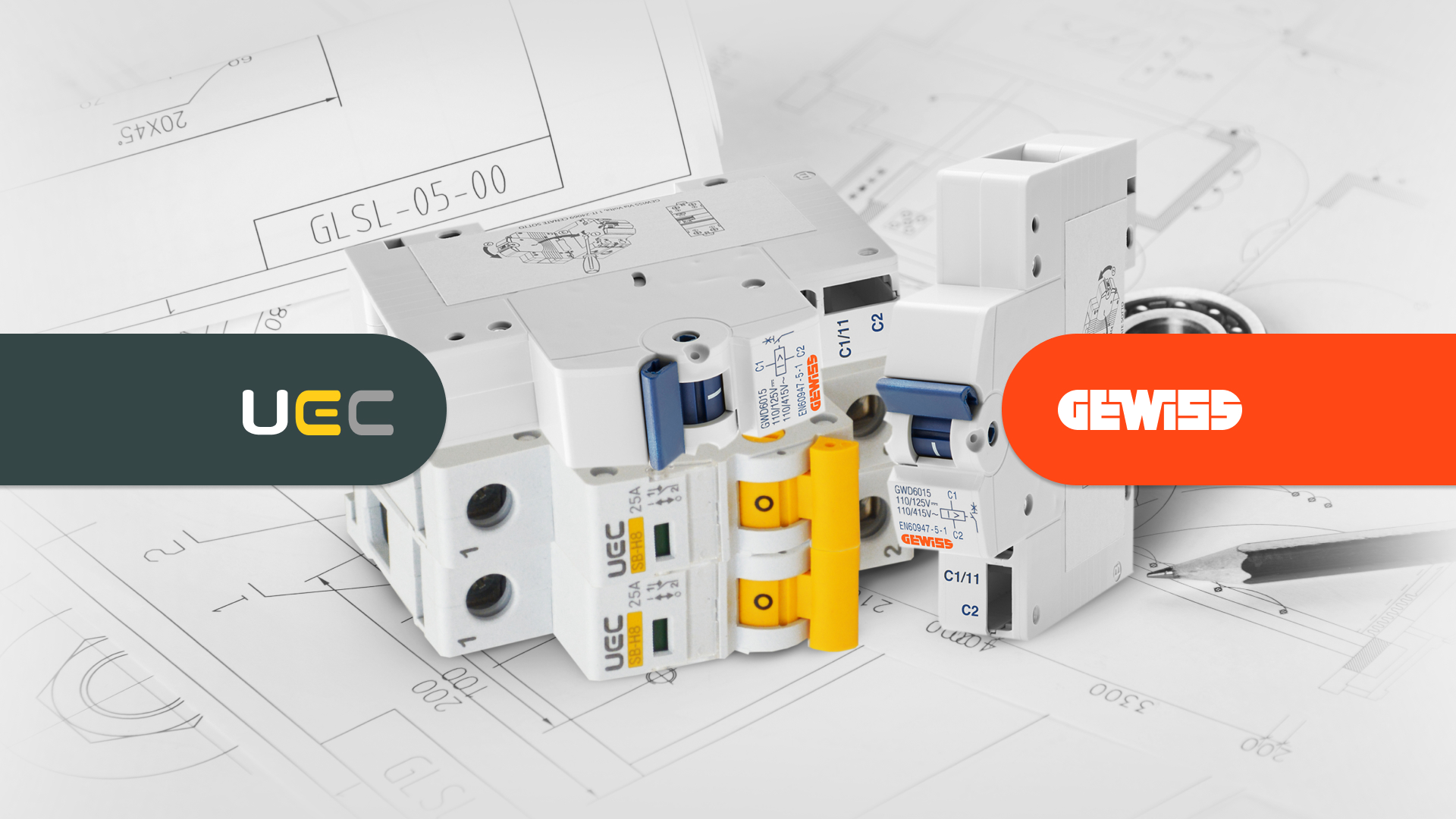A circuit breaker is a protective device that automatically interrupts an electric circuit in case of an overload or short circuit. Its main function is to safeguard wires, equipment, and people from hazardous conditions in the electrical system. Depending on the type, breakers can be used in residential, commercial, and industrial installations.
Nowadays, you can buy circuit breakers in any electrical store, but to choose the right one, it’s important to understand their technical specifications, labeling, and schematic symbols.
What is a circuit breaker?
The primary function of a circuit breaker is to prevent short circuits and overloads. Manufacturers also state in their technical documentation that the breaker trips when the load exceeds the allowable level. However, for continuous load monitoring and to prevent cable overheating, it’s recommended to use specialized equipment.
Circuit breakers work based on the type of built-in trip unit — thermal or electromagnetic. Most modern models are combined devices with both mechanisms:
-
Thermal trip unit reacts to current rise by heating a bimetallic strip. When it bends enough, it mechanically trips the breaker. It doesn’t respond instantly — it requires time to heat up.
-
Electromagnetic trip unit ensures instant shutdown. A sharp current spike creates a magnetic field in a coil, moving a plunger that opens the contacts. This mechanism is fast-acting.
Thanks to this combination, circuit breakers efficiently respond to both short-term current spikes (short circuits) and prolonged overloads.
Circuit Breaker Symbols on Diagrams
According to IEC 60617, a circuit breaker is symbolized by “⎯o⎯” (simplified version) or “⎯⎯[ ]⎯⎯” (full version), where square brackets indicate the protective mechanism.
Schematic symbol elements include:
-
Rectangle – the device body
-
Slashed line – indicates contacts that open when the breaker trips
-
Contact points – connected to the slashed line, showing multiple points of disconnection
-
Additional marks – indicate breaker type (AC/DC, tripping time, etc.)
In home electrical panels, breakers may be labeled as “QF1,” “QF2,” etc. “QF” is a standard marking for switching devices; the number is its order in the system.
Examples of single-, double-, triple-, and four-pole breakers:
a) Single-pole
b) Double-pole
c) Three-pole
d) Four-pole
Circuit Breaker Labeling
Each breaker has front panel labeling that shows its key specifications.
Example: C16 230/400V 6kA
Label explanation:
-
C16 – Type C tripping curve, 16A rated current
-
230/400V – Working voltage (single/three-phase)
-
6kA – Breaking capacity: the highest fault current it can interrupt safely
Common tripping characteristics:
| Type | Range | Typical Use |
|---|---|---|
| B | 3–5×In | Lighting, residential |
| C | 5–10×In | Outlets, offices, retail |
| D | 10–20×In | Motors, transformers, industrial |
In = rated current of the breaker
Key Circuit Breaker Specifications
-
Rated Current (In): Max current that won’t trip the breaker. Common values: 6, 10, 16, 20, 25, 32A. Choose based on conductor size and expected load.
-
Tripping Curve (B, C, D): Defines time/current threshold for short circuit trips.
-
Type B – fast-acting, for stable loads
-
Type C – universal use (homes, offices)
-
Type D – delayed response, for high inrush equipment
-
-
Number of Poles (1P, 2P, 3P, 4P):
-
Single-pole: phase only
-
Double-pole: phase + neutral
-
Three-pole: 3-phase
-
Four-pole: 3-phase + neutral
-
-
Rated Voltage (V):
-
230V for single-phase AC
-
400V for three-phase
-
DC versions also exist (e.g. 24V, 48V, 500V+)
-
-
Breaking Capacity (kA): The max short-circuit current the breaker can safely interrupt.
-
4.5–6kA is standard for homes
-
10kA+ used in industrial settings
-
-
Module Width:
-
Single-pole: 1–2 DIN modules
-
Multi-pole: 3–6 modules
-
Compact add-ons (auxiliary contacts) can be 0.5 modules
-
Common mistake: Choosing a breaker with too high a rated current. This leaves the circuit unprotected against overload, risking cable overheating and fire.
Selection Tips by Application
-
Apartments:
-
Type: B or C
-
Current: 16–25A
-
Poles: 1P or 2P
-
-
Private Homes:
-
Individual breakers for key loads (lighting, outlets, boiler)
-
Adequate breaking capacity for incoming line
-
-
Offices/Shops:
-
Allow power reserve
-
Use Type C or D for equipment with high inrush (e.g. HVAC units)
-
Conclusion
Circuit breakers are the cornerstone of any electrical system. To ensure safe and reliable operation, it’s essential to understand their labeling, parameters, and diagram symbols. This knowledge helps avoid connection errors, optimize installation, and reduce maintenance costs.



